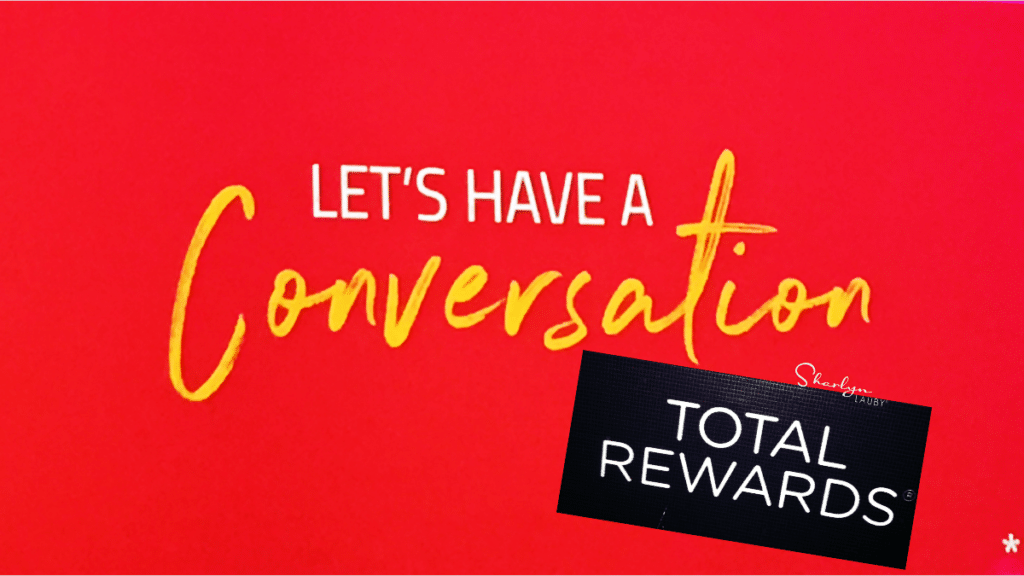Estimated reading time: 8 minutes
A couple months ago, I published an article about what to expect in employee benefits with the new year and new administration. Organizations might want to use this time to evaluate their current total rewards strategy and possibly make some changes.
And when I say “make changes”, I’m not talking about slashing employee benefits. A benefits package can represent 30-40% of an employee’s total rewards package. Of course this is relative to industry, geography, and job title. The bottom-line is that an employee’s salary and benefits are a big reason they accept an offer and stay with the organization. So, I thought it might be a good idea to revisit this topic and talk about building a total reward strategy that allows organizations to attract and retain employees.
I asked our friends at HUB International if they wanted to continue the conversation and thankfully, they said yes. Cory Jorbin, Esquire, is the chief compliance officer for HUB International’s West Region Employee Benefits team. In his role, Cory consults with employers of all sizes to design, implement and ensure the compliance of employee benefit plans. He holds a Juris Doctorate from Cleveland State University, is a licensed attorney in the State of Illinois, and is admitted to practice before the U.S. Tax Court.
Cory has spoken to us before about Individual Coverage Health Reimbursement Arrangements and the Affordable Care Act. Please remember that his comments shouldn’t be construed as legal advice or as pertaining to any specific factual situations. If you have detailed employee benefit questions, they should be addressed directly with your friendly neighborhood labor and employment attorney or benefits broker.
Cory, thanks for being here. Let’s start with a definition. What are “total rewards”? And what’s the purpose of a total rewards strategy?
[Jorbin] Broadly, total rewards are the rewards that employers provide employees, including compensation and benefits. These can also include work/life balance, career development, and recognition. The purpose of a total rewards strategy is to shape the employer’s strategy for attracting and retaining talent. While employees choose where they want to work for a variety of reasons, the employer’s total rewards play a huge role.
One of the challenges we’re facing right now is that changes related to business and the workforce seem to happen almost every day. Obviously, organizations don’t want to be constantly changing their strategy. How can organizations tell when it’s the right time to make updates / revisions?
[Jorbin] One of the challenges with compensation data is that there is always a lag between when the data is collected and when it can be viewed. In this regard, employers are behind the data. Thankfully employers can age this data by adjusting it to account for the time lag. For example, if data is one year old and the consumer price index (CPI) increased 3.2% over the prior year, they could simply adjust the compensation data by 3.2%. Alternatively, if the employer provided annual compensation increases of 2.5% on average they may choose to use 2.5%.
Employers should also consider soft factors such as unemployment rates, the number of applicants they receive from job postings, and feedback from candidates. In markets with lower unemployment, employers may need to more aggressively adjust their compensation data than when unemployment is higher. Similarly, if potential candidates have salary requirements outside the employer’s range, or at the higher end of the range, this could be the result of using outdated, inaccurately aged data. Bear in mind this may not be the only cause for these results.
Is there a model or framework that organizations can use when updating / revising their strategy, so they don’t miss a step?
[Jorbin] A common approach employers use is the Assess–Align–Implement–Evaluate framework:
- Assess: Analyze internal data, employee feedback, market benchmarks, and business priorities.
- Align: Ensure rewards offerings align with company culture, talent goals, and financial sustainability.
- Implement: Roll out changes through thoughtful planning, system updates, and communication.
- Evaluate: Monitor effectiveness, gather feedback, and make refinements over time.
This approach can be used in other areas outside of total rewards too.
A total rewards update could involve changing or eliminating a current employee benefit. What are the advantages / disadvantages to keeping legacy benefits for current employees while offering something different to new employees?
[Jorbin] A total rewards strategy should include looking at the benefits the employer provides and determining whether they are the right benefits and whether they are valued by their employees.
Keeping certain benefits in place for current employees while offering something different for new employees is very challenging for a few key reasons. To start, the employer will need to either create separate benefits guides/communications for each group to highlight who is eligible for what; or they would have a single guide but then have to identify in that guide that Group A is eligible for a certain benefit, and Group B is eligible for a different benefit. Once employees in Group A realize they aren’t eligible for the same benefits as those in Group B (and vice versa), this will sow discontent among both groups. Inevitably there will be employees in both groups who would prefer the benefit offered to the other group. Even if they have separate benefits guides, if employees in each group work together they will eventually learn of the different benefits.
Depending on the nature of these benefits, they could also raise nondiscrimination concerns under either the §125 or §105(h) rules of the Internal Revenue Code. This could arise if the different benefits favor highly compensated employees. At least initially this will be the case, since the group of current employees includes those who are highly compensated.
Over time, this may change however this leads to another potential challenge. When an employer offers legacy employees different benefits and they hire a new executive, they are a new hire just like all other new hires and they are not eligible for the legacy benefits. Sometimes this can be a tough message for employers to deliver.
One possible advantage to this strategy is the ability to test drive a different benefit to see if it makes sense to expand to the entire group. For example, employers sometimes pilot new benefits with select groups of employees before rolling them out to their entire populations if they meet the employer’s goals.
(Editor’s Note: Just a reminder that Section 125 of the Internal Revenue Code is focused on cafeteria plans and Section 105 is focused on health reimbursement accounts.)
It’s one thing to have a strategy and another to communicate the strategy to employees. Can you share with us 2-3 things organizations need to keep in mind when they’re communicating a new or revised strategy to employees.
[Jorbin] Employers should start with being transparent and establishing trust. Be honest about what is changing and why. For example, if a benefit is being removed due to cost, or low utilization, share this with employees.
Next, employers should consider delivering the communications in multiple formats. Employees vary in how they want to receive such information and the formats most likely to impact them. This often means delivering this information via multiple channels to ensure it is consumed and understood.
Finally, employers should focus on clarity and simplicity in their communications. This means avoiding jargon that HR may be familiar with, but those outside of HR may not be. Employees need to understand what’s changing, why it matters, and how it impacts them personally.
Last question. We agree that employee benefits are an important part of total rewards. Organizations are going to want to get this right. Just in case an organization isn’t aware, what type of counsel / advice does a brokerage firm offer?
[Jorbin] Employers should absolutely use their brokers as resources in shaping the benefits component of their total rewards strategies. The benefits market is constantly evolving, with new vendors constantly coming to market. Brokers are generally knowledgeable about the various types of vendors and solutions in the market. Brokers can also help employers identify potential vendors and solutions that further the employer’s total rewards strategy and align with their goals. Just because a particular solution or vendor is growing in popularity does not mean it is the right solution for every employer.
I want to extend a huge thanks to Cory for sharing his knowledge with us. If you want to learn more about building a total rewards strategy, check out this ebook from HUB titled “Quality Employee Experience: A Roadmap to Better Benefits, Better Engagement, and Better Experiences”.
Building a total rewards strategy isn’t about being the biggest and best at everything. It is about offering a package that’s internally equitable and externally competitive. That allows organizations to attract and retain employees.
Image captured by Sharlyn Lauby while exploring the streets of Las Vegas, NV
The post Building a Total Reward Strategy That Will Attract and Retain Talent appeared first on hr bartender.












